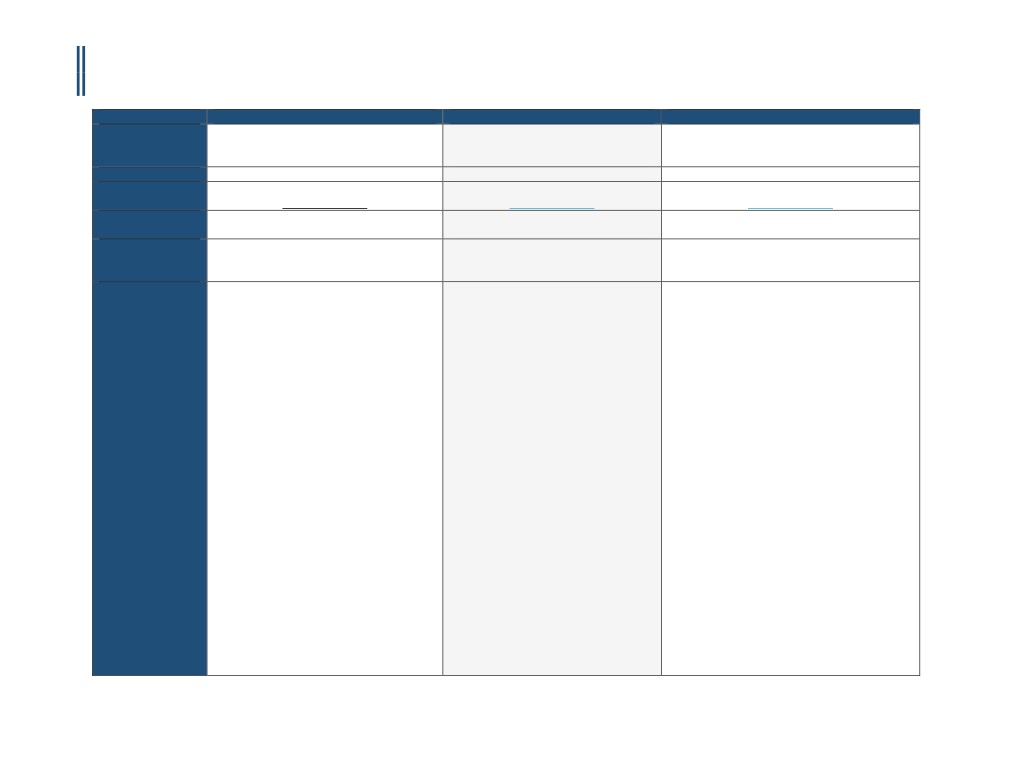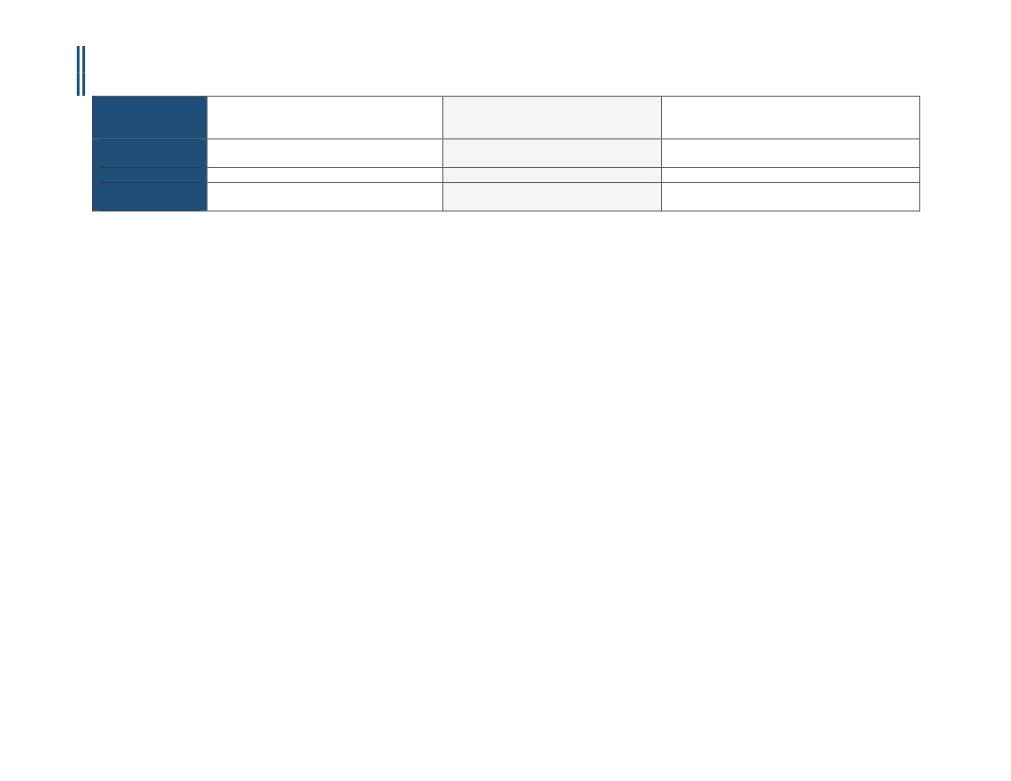
NEW YORK - CORONARY CTA PRIOR-AUTHORIZATION INFORMATIONAL GUIDE
Updated March 14th, 2017
Payer
United Healthcare
Excellus BlueCross BlueShield
Emblem Health
Policy Name
Physician Guidelines
Cardiac/Coronary Computed Tomographic
eviCore Cardiac Imaging Guidelines
Current, Evidence-based Recommendations
Angiography (Cardiac/Coronary CTA):
Regarding Imaging
Contrast-Enhanced
Policy #
Criteria for Imaging V2.0.2016
6.01.34
RBM
eviCore (Product line and POS dependent)
eviCore (Product line and POS dependent)
eviCore (Product line and POS dependent)
Applicable CPT
75574
75572 75573 75574
75572 75573 75574
Code(s)
Applicable ICD
Not Listed
Numerous
Not Listed
Code(s)
Not all-inclusive
Covered
Computerized Tomographic Angiography
Based upon our criteria and review of the
Emblem Health has not made their Coronary CTA
Coronary Arteries (CCTA) may be considered
peer-reviewed literature, cardiac computed
medical policy public.
medically necessary for the following
tomographic angiography (CTA), using at
indications:
least a 64-slice CT scanner, is considered
Prior Approval requests must be made in one of
medically appropriate for any of the
three ways (more info at link here):
A. Evaluation of known coronary artery disease
following:
(CAD) [One of the following]
online prior approval requests, the ordering
1. CAD documented by prior imaging stress
C. Cardiac CT angiography:
physician must be a registered user. To
test, cardiac catheterization, cardiac CT
register for a user ID and password, visit
angiogram, coronary revascularization,
1. Evaluation of known coronary artery
www.evicore.com and click the "Register"
carotid stenosis or stroke, peripheral artery
disease (CAD) documented by prior
button.
disease, or aortic aneurysm [One of the
imaging stress test, cardiac catheterization,
• By phone: Call 1-866-417-2345 for HIP,
following]
cardiac CT angiogram, coronary
EmblemHealth CompreHealth EPO,
a. New chest pain or shortness of breath
revascularization, carotid stenosis or
EmblemHealth Medicare HMO, GHI HMO and
[One of the following]
stroke, peripheral artery disease or aortic
Vytra plan members. Call 1-800-835-7064
i. Prior coronary artery bypass grafting
aneurysm:
for EmblemHealth Medicare PPO plan
and there are no exclusions to cardiac
a. New chest pain or shortness of
members.
CT angiography
breath with prior coronary artery bypass
• By fax: The fax option applies only to prior
ii. Medicare only - an imaging stress
grafting and no exclusions to cardiac CT
approval requests for cardiac imaging codes.
test or catheterization has not been
angiography; or
You may fax these requests to 1-888-622-
performed nor is planned to evaluate
b. To identify whether bypass grafts are
7369. With your fax submission, please
symptoms and there are there are no
located directly beneath the sternum, so
include an EmblemHealth-specific cardiac
exclusions to cardiac CT angiography
that alternative ways to enter the chest can
imaging clinical request form. This form is
b. No new chest pain or shortness of
be planned.
available at www.evicore.com.
breath
c. No new chest pain or shortness of
i. A left main stent of three mm or
breath and a left main stent of 3 mm or
Emblem Health medical policy on CTA likely follows
more is present and there are no
more is present and there are no exclusions
the eviCore Cardiac Imaging Guidelines in which
exclusions to cardiac CT angiography
to cardiac CT angiography.
1
CCM-100-129-A

NEW YORK - CORONARY CTA PRIOR-AUTHORIZATION INFORMATIONAL GUIDE
Updated March 14th, 2017
2. CAD documented by a prior calcium
2. Evaluation of known coronary artery
coronary CTA is considered medically necessary for
score less than 400
disease (CAD) documented by a prior
the following:
a. Evaluation of new chest pain or
calcium scores less than 400:
dyspnea, no imaging stress test is
a. Evaluation of new chest pain or
1.For symptomatic individuals who have a very low,
planned, and there are no exclusions to
dyspnea, no imaging stress test is planned,
low, or intermediate pretest probability of CAD*,
cardiac CT angiography
and there are no exclusions to cardiac CT
CCTA may be used in the following situations:
angiography.
o Unable to perform either an exercise or
B. Evaluation of newly diagnosed congestive
3. Evaluation of suspected coronary artery
pharmacologic imaging stress test
heart failure or cardiomyopathy [Both of the
disease with new or changed chest pain or
o Stress test (treadmill or imaging stress test) is
following]
shortness of breath.
uninterpretable, equivocal, or a false positive is
1. No prior history of coronary artery
4. Unable to perform either an exercise or
suspected
disease, the ejection fraction is less than 50
pharmacologic imaging stress test.
o Replace performance of invasive coronary
percent, and low or intermediate risk on
5. Stress test (treadmill or imaging stress
angiogram
the pre-test probability
test) is normal, uninterpretable, equivocal,
2. For symptomatic individuals, evaluate post-CABG
assessment
or a false positive is suspected.
graft patency when only graft patency is a
2. No exclusions to cardiac CT angiography
6. Replace performance of invasive
concern and imaging of the native coronary artery
3. No cardiac catheterization, SPECT,
coronary angiogram.
anatomy is not needed, such as in early graft
cardiac PET, or stress echocardiogram has
7. Abnormal treadmill with normal imaging.
failure.
been performed since the diagnosis of
8. Prior calcium scores less than 400.
3. For symptomatic individuals with unsuccessful
congestive heart failure or cardiomyopathy
9. Prior coronary artery bypass grafting;
conventional coronary angiography.
urgent presentation of acute symptoms can
C. Evaluation of suspected coronary artery
proceed to cardiac CT angiography without
Additional Indications:
disease [One of the following]
stress testing of any type and regardless of
1.Re-do CABG
1. New or changed chest pain or shortness of
pretest probability.
o To identify whether bypass grafts are located
breath
10. Evaluation of suspected coronary artery
directly beneath the sternum, so that
a. Contraindication to a routine exercise
disease in patients prior to non-coronary
alternative ways to enter the chest can be
stress test (inability to exercise, diabetes,
cardiac surgery; and
planned.
digoxin use, poor heart rate response,
a. Intermediate risk on the pre-test
2.Evaluate coronary artery anomalies and other
Wolff-Parkinson-White syndrome,
probability assessment and no exclusion to
complex congenital heart disease of cardiac
complete left bundle branch block, one
cardiac CT angiography.
chambers or great vessels
mm or more ST-J depression with
11. Evaluation of suspected coronary artery
o Report CPT®75574 for evaluating coronary
horizontal or downsloping ST segments
disease with suspected anomalous
artery anomalies.
80 msec after the J point, or ventricular
coronary artery; and
o Report CPT®75573 for congenital heart disease
paced rhythm)
a. Cardiac catheterization was
• To evaluate the great vessels, Chest CTA
i. Low or intermediate risk on the pre-
performed, all coronary arteries were not
(71275) can be performed instead of CCTA or
test probability assessment AND
identified, and no exclusion to cardiac CT
in addition to CCTA For anomalous pulmonary
ii. No exclusions to cardiac CT
angiography.
venous return, can add CT abdomen and
angiography
12. New onset of congestive heart failure
pelvis with contrast (CPT®74177)
b. No contraindications to a routine
without known coronary artery disease to
3.Anomalous coronary artery(ies) suspected for
exercise stress test [One of the following]
assess coronary arteries; and
diagnosis or to plan treatment and less than age
i. Normal routine exercise stress
a. Low or intermediate risk on the pre-
40 with a history that includes one or more of the
test probability assessment, the ejection
following
2
CCM-100-129-A

NEW YORK - CORONARY CTA PRIOR-AUTHORIZATION INFORMATIONAL GUIDE
Updated March 14th, 2017
01.New or worsening chest pain or
fraction is less than 50% and no exclusion
o Persistent exertional chest pain and normal
shortness of breath, cardiac
to cardiac CT angiography.
stress test
catheterization is not planned and
13. Ventricular tachycardia (6 beat runs or
o Full sibling(s) with history of sudden death
there are no exclusions to cardiac CT
greater) if CCTA will replace conventional
syndrome before age 30 or with documented
angiography
invasive coronary angiography.
anomalous coronary artery
ii. Routine exercise stress test
14. Equivocal coronary artery anatomy on
o Resuscitated sudden death and
abnormal or not performed
conventional cardiac catheterization;
contraindications for conventional coronary
01.Intermediate risk on the pre-test
15. Preoperative assessment of the
angiography
probability assessment and no
coronary arteries in patients who are going
4.Unexplained new onset of heart failure
exclusions to cardiac CT angiography
to undergo surgery for aortic dissection,
5.Evaluation of newly diagnosed congestive heart
2. Prior imaging stress test [One of the
aortic aneurysm, or valvular surgery if CCTA
failure or cardiomyopathy
following]
will replace conventional invasive coronary
o No prior history of coronary artery disease, the
a. Normal imaging stress test [All of the
angiography;
ejection fraction is less than 50 percent, and low
following]
16. Vasculitis/Takayasu’s/Kawasaki’s
or intermediate risk on the pre-test probability
i. New or worsening chest pain or
disease.
assessment AND
shortness of breath AND
o No exclusions to cardiac CT angiography
ii. Cardiac catheterization is not
o No cardiac catheterization, SPECT, cardiac PET,
planned AND
or stress echocardiogram has been performed
iii. No exclusions to cardiac CT
since the diagnosis of congestive heart failure or
angiography
cardiomyopathy
b. Abnormal imaging stress test
6. Ventricular tachycardia (6 beat runs or greater) if
documenting ANY of the following if no
CCTA will replace conventional invasive coronary
exclusions to cardiac CT angiography are
angiography.
present [One of the following]
7. Equivocal coronary artery anatomy on
i. Normal treadmill with reversible
conventional cardiac catheterization
perfusion abnormality or wall motion
8. Newly diagnosed dilated cardiomyopathy
abnormality including transient
9. Preoperative assessment of the coronary arteries
ischemic dilatation
in patients who are going to
ii. Equivocal
undergo surgery for aortic dissection, aortic
iii. Abnormal treadmill with normal
aneurysm, or valvular surgery if
imaging
CCTA will replace conventional invasive coronary
3. Evaluation for non-coronary cardiac
angiography”
surgery
10. Vasculitis/Takayasu’s/Kawasaki’s disease
a. Intermediate risk on the pre-test
probability assessment and no exclusions
to cardiac CT angiography
4. Suspected anomalous coronary artery
a. Cardiac catheterization was performed, all
coronary arteries were not identified, and no
exclusions to cardiac CT angiography
3
CCM-100-129-A

NEW YORK - CORONARY CTA PRIOR-AUTHORIZATION INFORMATIONAL GUIDE
Updated March 14th, 2017
Not Covered /
The following is a list of exclusion criteria for
The following are examples of
1. Irregular heart rhythms (e.g., atrial
Investigational and
CCTA:
contraindications to the use of cardiac CT
fibrillation/flutter, frequent
Not Medically
• Atrial fibrillation
angiography:
irregular premature ventricular contractions or
Necessary
• Multifocal atrial tachycardia (MAT)
A. Atrial fibrillation;
premature atrial
• Inability to lie flat
B. Multifocal atrial tachycardia;
contractions, and high grade heart block)
• Body mass index of 40 or more
C. Inability to lie flat;
2. Multifocal Atrial Tachycardia (MAT)
• Inability to obtain a heart rate less than 65
D. Body mass index of greater than 40;
3. Inability to lie flat
beats per minute after betablockers
E. Inability to obtain a heart rate of less
4. Body mass index of 40 or more
than 65 beats per minute after beta
5. Inability to obtain a heart rate less than 65 beats
• Calcium (Agatston) score of 1000 or more
blockers;
per minute after beta-blockers
• Inability to hold breath for at least 8 seconds
F. Calcium score of greater than 1000;
6. Inability to hold breath for at least 8 seconds
Renal insufficiency
G. Inability to breath hold for greater
7. Renal Insufficiency
than 8 seconds;
8. Asymptomatic patients and routine use in the
H. Renal insufficiency (creatinine
evaluation of the coronary arteries following heart
greater than 1.8 mg/dl).
transplantation
9. CCTA should not be performed if there is
extensive coronary calcification (calcium score
>1000)
10. Evaluation of coronary stent patency (metal
artifact limits accuracy)
11. Evaluation of left ventricular function following
myocardial
infarction or in chronic heart failure
12. Evaluation of patients with postoperative native
or prosthetic cardiac valves who have technically
limited echocardiograms, MRI or TEE.
Patients with indeterminate echocardiogram should
undergo MUGA
(CPT®78472 or CPT®78494) or cardiac MRI.
13. First test in evaluating symptomatic patients
(e.g. chest pain)
14. Irregular heart rhythms (e.g., atrial
fibrillation/flutter, frequent irregular premature
ventricular contractions or premature atrial
contractions, and high grade heart block)
15. High pre-test probability for CAD—rather, these
patients should undergo conventional coronary
angiography, especially if an
interventional procedure (e.g., PCI) is anticipated
16. Identification of plaque composition and
morphology
17. Myocardial perfusion and viability studies
4
CCM-100-129-A

NEW YORK - CORONARY CTA PRIOR-AUTHORIZATION INFORMATIONAL GUIDE
Updated March 14th, 2017
18. Preoperative assessment for non-cardiac,
nonvascular surgery
19. Repeat or routine follow-up of CAD with CCTA
Payer Specific
Requirements
Effective Date
9/16/2016
6/16/2005
3/18/2016
Last Review/
4/21/2016
Original Policy Date
SUGGESTED DOCUMENTATION TO NAVIGATE PRE-AUTHORIZATION
For instances when the indication is medically necessary, clinical evidence is required to determine medical necessity. For instances when the indication is investigational, you
may submit additional information to the Prior Authorization Department. The following documentation is recommended in order to ensure that pre-authorization can be
secured in a timely and efficient manner:
1.
Medical chart notes - all notes from the patient chart related to the requested procedure, including patient’s current cardiac status/ symptoms, cardiac
factors, and indications.
2.
Relevant patient information, including:
▪ Patient age, height, weight, and BMI
▪ Family history of heart problems (including relationship to member, age at diagnosis, type of event, etc.)
▪ Medical history (e.g. diabetes, hypertension, stroke arrhythmia, etc.)
▪ Cardiac risk factors
▪ Previous cardiac treatments, surgeries, or interventions
▪ Problems with exercise capacity
▪ Ordering provider information
▪ Imaging provider information
▪ Imaging exam(s) being requested (body part, right, left, or bilateral)
▪ Patient diagnosis (suspected or confirmed)
3.
Diagnostic or imaging reports from previous tests (exercise stress test, echocardiography, stress echocardiography, MPI, coronary angiography, etc.)
4.
Symptom history (onset, course, new or changing symptoms) related to all pertinent cardiac conditions, such as heart muscle/ valvular disease, structural
abnormality, infection, exposure to toxins/ chemotherapy, etc.
5.
Examination results, including evaluation of hypertension, heart failure, cardiomyopathy, abnormal rhythm, pulmonary embolus, congenital condition, etc.
6.
Any other documentation that supports the need for the procedure
DISCLAIMER: The information provided in this document is general information only and is not provided as legal advice, nor is it advice about how to code, complete, or submit any particular claim for
payment for health care services or goods. This information provides only an overview of HeartFlow’s understanding of current coverage policies for a select number of payers, and may not provide
all the information necessary to understand a particular patient’s benefits or payers coverage policies and prior authorization requirements. The information provided may not be comprehensive or
complete. It is the responsibility of the health care provider, such as a hospital or a physician to verify coverage and prior authorization requirements, submit complete, accurate and appropriate bills
or claims for payment that comply with applicable laws and regulations and third-party payer requirements, and to determine the appropriate codes, charges, and modifiers that the provider uses for
those purposes. Third-party payers may have policies and coding requirements that differ from those described here, and such policies can change over time.
5
CCM-100-129-A

NEW YORK - CORONARY CTA PRIOR-AUTHORIZATION INFORMATIONAL GUIDE
Updated March 14th, 2017
HeartFlow disclaims any responsibility for claims submitted by health care physicians or others. Physicians should check and verify current policies and requirements with the payer for each patient.
HeartFlow endorses the best practice that all coding and billing submissions to payers be truthful and not misleading, and that providers make full disclosures to the payer about how the service has
been used. HeartFlow cannot guarantee success in obtaining payment for products and services.
Current Procedural Terminology (CPT) copyright 2016.
All rights reserved. CPT® is a registered trademark of the American Medical Association (AMA). Fee schedules, relative value units, conversion factors and/or related components are not assigned by
the AMA, are not part of CPT coding, and the AMA is not recommending their use.
The International Classification of Diseases, Tenth Revision, Clinical Modification (ICD-10) is maintained by the National Center for Health Statistics and the Centers for Medicare and Medicaid
Services.
References:
1.
“Cardiac Checklist (Health Plan).” RadMD, http://www1.radmd.com/media/459739/template-cardiac-checklist-magellan-hc-logo-4-1-2016.pdf. Accessed 25 October 2016.
2.
“ IM Specialty Health ( IM) Ordering Physician/Provider Quick Tips for Diagnostic Imaging Management Programs.” Anthem,
https://www11.anthem.com/provider/nh/f5/s2/t0/pw_ad087257.pdf. Accessed 25 October 2016.
6
CCM-100-129-A